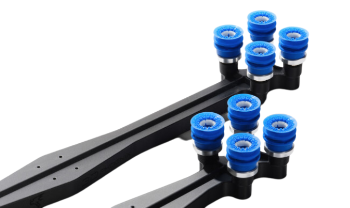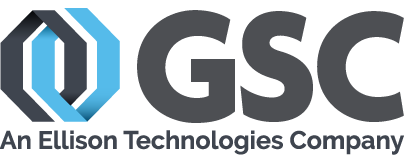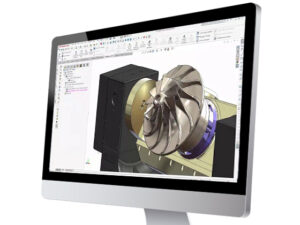In the fast-paced world of manufacturing, efficiency and precision are crucial, especially when it comes to robotic tooling. Companies are always searching for innovative ways to enhance production processes, reduce downtime, and cut costs. One of the most groundbreaking solutions today is the integration of 3D printing, particularly Markforged’s advanced additive manufacturing technologies, into robotic tooling.

Markforged 3D printing offers a unique combination of strength, precision, and material versatility that has dramatically improved how companies design and produce robotic tooling. In this blog, we’ll explore how Markforged 3D printing is revolutionizing robotic tooling efficiency and why it’s a game-changer for manufacturers.
Customizable and Durable Tooling
Traditional robotic tooling often requires complex machining processes that can be costly and time-consuming, especially when you need custom parts. With Markforged 3D printers, you can rapidly design and produce custom tools tailored to specific robotic tasks. The printers utilize materials such as Onyx (a nylon-carbon fiber composite) and continuous fiber reinforcement, ensuring that the printed parts are not only highly customizable but also exceptionally durable.
This ability to create strong, lightweight parts means less wear and tear on the robotic system, reducing the need for frequent replacements or adjustments. The result? More uptime, fewer maintenance issues, and greater overall efficiency in production.
Streamlined Prototyping and Iteration
When designing robotic tools, quick iteration is key to achieving optimal performance. Traditional manufacturing methods often involve lengthy lead times for tooling production and testing. With Markforged’s 3D printers, you can rapidly prototype and test robotic tools in-house. Engineers can design, print, test, and refine tooling concepts within days instead of weeks, speeding up the development cycle significantly.
By streamlining the prototyping process, manufacturers can bring new products to market faster while optimizing the performance of their robotic systems. This rapid iteration capability also ensures that any necessary adjustments can be made quickly, resulting in less downtime and better overall productivity.
Cost-Effective Manufacturing
One of the most significant advantages of Markforged 3D printing is the cost-effectiveness it brings to manufacturing robotic tooling. Traditional methods often require expensive machining processes, especially for complex geometries. Markforged’s printers eliminate the need for expensive molds or multi-part assemblies by printing entire tools in one go. This reduces material waste, minimizes labor costs, and slashes overall production expenses.
Additionally, the durability of Markforged 3D-printed tools means they last longer, resulting in fewer replacements and further reducing costs. Over time, manufacturers can see substantial savings, making it a highly attractive solution for businesses looking to maximize efficiency while minimizing operational expenses.
Enhanced Precision for Robotic Operations
Precision is essential in robotic systems to ensure tasks are executed flawlessly. The high accuracy and repeatability of Markforged 3D printers make them ideal for producing intricate and precise tooling. This is particularly useful in automated environments where robotic arms require specialized grippers, end-of-arm tools, or custom fixturing to handle delicate operations or irregularly shaped components.
By using Markforged 3D printing, manufacturers can ensure that their robotic tools meet exact specifications, which leads to enhanced precision in assembly, handling, and other automated tasks. This ultimately improves overall production quality and reduces errors or defects.
Lightweight Solutions for Faster Operation
Robotic arms benefit from lightweight tooling, as it allows them to operate more efficiently and with less energy. Markforged’s continuous fiber reinforcement process produces parts that are not only strong but also significantly lighter than their metal counterparts. Lightweight tools reduce the strain on robotic systems, allowing them to move more quickly and with greater agility.
By replacing traditional heavy metal tools with 3D-printed alternatives, manufacturers can increase the speed and efficiency of their robotic operations, contributing to higher throughput and faster cycle times.
Simplified Maintenance and Replacement
One of the challenges of robotic tooling is the inevitable wear and tear that leads to downtime for replacements. With Markforged 3D printing, producing replacement parts is fast, simple, and cost-effective. Manufacturers can quickly print spare tools or components as needed, drastically reducing the downtime associated with waiting for new parts to arrive from external suppliers.
This ability to maintain and repair tooling on-demand improves the reliability of robotic systems and keeps production lines running smoothly.
Markforged 3D printing has transformed the way manufacturers approach robotic tooling by providing a more efficient, cost-effective, and customizable solution. From rapid prototyping and reduced costs to enhanced precision and durability, the advantages of integrating Markforged technology into robotic systems are clear.
By leveraging the power of 3D printing, manufacturers can optimize their robotic tooling processes, reduce downtime, and stay ahead in the competitive manufacturing landscape. If you’re ready to explore how Markforged can improve your robotic tooling efficiency, contact GSC today to learn more about our 3D printing solutions.
Share
Meet the Author

